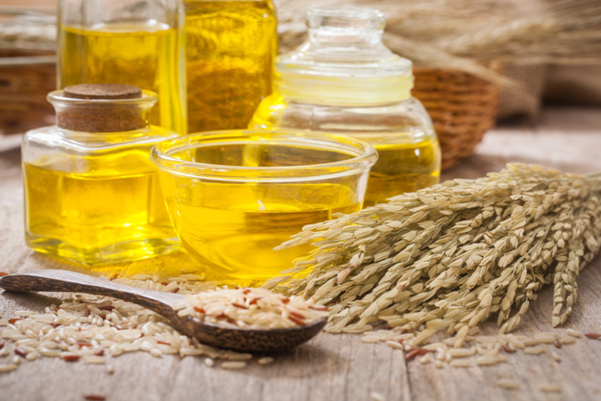Research by a group of scientists from Nhat Hai New Technology Joint Stock Company (OIC NEW) was published in the Hindawi Science and Technology Journal, specializing in Nanomaterials.
Rutin
Rutin is a flavonol, found in abundance in typical plants such as daffodils, passionflowers, buckwheat, black tea, and apples. Rutin has diverse biological activities and many pharmacological applications such as: antioxidant, anti-inflammatory, anti-viral and low toxicity with potential clinical applications, including anti-cancer effects. letter of this active substance.
Reports have shown that, at a dose of 120 mg/kg, Rutin has the ability to inhibit the growth of human leukemia tumors in an in-vivo mouse xenograft model. Rutin affects cell arrest and apoptosis, reducing the number of metastatic nodules and cytotoxicity. In addition to leukocytes, rutin also showed effects on many other cancer cell lines such as CRC colorectal cancer cells, B16F10 lung cancer cells, HTC liver cancer cells.

Chemical structure of rutin
However, rutin is a natural active ingredient that is poorly soluble in water (only 0.8 mg/mL) so it is only slightly absorbed from the gastrointestinal tract. Therefore, the oral bioavailability of rutin is only 20%, which is quite low compared to the target.
To solve this problem, a group of scientists from OIC NEW Company, represented by Inventor Luu Hai Minh, has chosen a nanoparticle-based drug delivery system approach. The advantage of nanoparticle-based drug delivery systems is that nanoparticle drugs can be engineered to achieve longer circulation times, better stability, improved concentration and internal drug accumulation, and increased drug availability. better ability to reduce toxicity to normal tissues.
The prenanoemulsion nanoparticle-based drug delivery system contains surfactants, surfactants and pharmaceutics, which can form nanoemulsions under conditions of digestive juices and intestinal motility after oral administration. The formation of rutin in the form of a nanoemulsion with a particle size of less than 100 nm can enhance drug solubility and absorption in the gastrointestinal tract. In addition, thanks to its stability, long circulation time and the ability to increase drug accumulation in cancer cells, Tween-80 and PEG-600 were selected as excipients to prepare rutin pre-emulsions in this study. . The requirement here is that the system should not be toxic to normal cells.
Rutin nanoemulsion system
To date, there have been few studies on the formulation of rutin in the pre-emulsion system and its cytotoxicity against lung and colon cancer. The research of inventor Luu Hai Minh and a group of scientists is considered a new invention for modern medicine. Inventor Luu Hai Minh said that, with a small size of 20-50 nm, the created rutin nanosystem has the potential to penetrate into cancer organizations. Then, under the influence of the environment, temperature, enzymes, etc., the shell will release, releasing nutrients without being destroyed or eliminated along the way.
The results of the particle size analysis showed that the rutin nanoparticles have a spherical shape with a smooth surface, which helps to have better mobility in blood vessels compared to other shaped nanoparticles.
The rutin particles have uniform size and shape, evenly distributed in the water emulsion. The average size of rutin nanoparticles is about 15 nm, which is very optimal and suitable for drug delivery into the body, thereby accumulating toxic compounds in cancer cells to weaken. Nanoparticles larger than 10 nm in size will not leak into the capillaries and are not eliminated by the one-time renal clearance process, thereby improving blood circulation time. At the same time, it is not captured by macrophages in the mononuclear phagocyte system and easily penetrates into human organs, especially tumors.

HR-TEN image of nano rutin after dissolving the pre-emulsion in water. Particle size is small, spherical and uniform
With these advantages, the process of preparing rutin nanoemulsions of Nhat Hai New Technology Joint Stock Company has been granted the Patent Utility Solution Patent No. 2490 by the National Office of Intellectual Property on 13/10/ 2020.
The team also conducted in-vitro tests on lung cancer cells, colon cancer cells and human fibroblast cells. By means of IC50 analysis, the research team determined that, within 72 hours, to inhibit over 50% of cancer cells, the concentration of rutin is: 154.8 μM for lung cancer cells and 154.8 μM for lung cancer cells, respectively. 251.5 μM with colon cancer cells.

Testing the water solubility of nano rutin vs rutin via the Tyndall effect
With the success of this study, the OIC NEW team of scientists will open a new direction in the application of rutin by nanotechnology to treat cancer. At the same time, it creates a premise for the development of new research on Nano technology based on this first published process.
Currently, the OIC R&D team and Inventor Luu Hai Minh are taking the final steps to announce Nano NO+ to help promote cardiovascular health; Reduce high blood pressure, prevent cardiovascular diseases such as atherosclerosis, stroke.
The study “Evaluation of cytotoxic effects of Rutin Prenanoemulsion in lung and colon cancer cell lines” was published in the Hindawi Journal of Science and Technology. Readers can watch it in full here.
Nhat Hai New Technology Joint Stock Company
Tel.: 1900 63 69 13
Address: 66 Trung Hoa, Cau Giay, Ha Noi
Website: https://oic.com.vn/
















